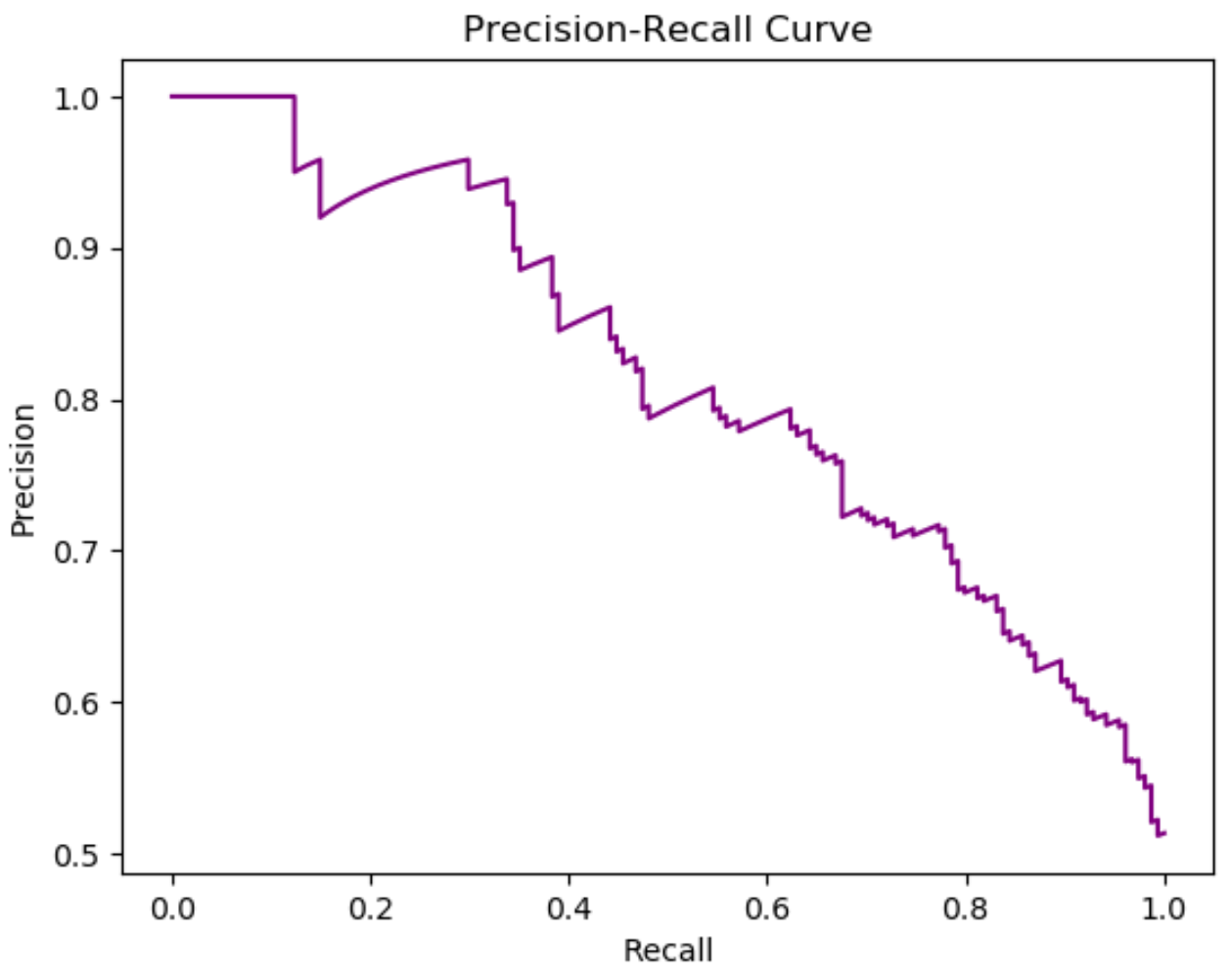如何在 python 中创建精确召回曲线
在机器学习中使用分类模型时,我们经常用来评估模型质量的两个指标是精确率和召回率。
准确性:相对于总阳性预测的正确阳性预测。
计算如下:
- 准确率 = 真阳性 /(真阳性 + 假阳性)
提醒:根据实际阳性总数纠正阳性预测
计算如下:
- 提醒 = 真阳性 /(真阳性 + 假阴性)
为了可视化某个模型的精确率和召回率,我们可以创建一条精确率-召回率曲线。该曲线显示了不同阈值下精度和召回率之间的权衡。

以下分步示例展示了如何在 Python 中为逻辑回归模型创建精度召回曲线。
第1步:导入包
首先,我们将导入必要的包:
from sklearn import datasets from sklearn. model_selection import train_test_split from sklearn. linear_model import LogisticRegression from sklearn. metrics import precision_recall_curve import matplotlib. pyplot as plt
步骤 2:拟合逻辑回归模型
接下来,我们将创建一个数据集并为其拟合逻辑回归模型:
#create dataset with 5 predictor variables
X, y = datasets. make_classification (n_samples= 1000 ,
n_features= 4 ,
n_informative= 3 ,
n_redundant= 1 ,
random_state= 0 )
#split dataset into training and testing set
X_train, X_test, y_train, y_test = train_test_split(X, y, test_size= .3 , random_state= 0 )
#fit logistic regression model to dataset
classifier = LogisticRegression()
classify. fit (X_train, y_train)
#use logistic regression model to make predictions
y_score = classify. predict_proba (X_test)[:, 1 ]
第 3 步:创建精确率-召回率曲线
接下来,我们将计算模型的精确率和召回率,并创建精确率-召回率曲线:
#calculate precision and recall
precision, recall, thresholds = precision_recall_curve(y_test, y_score)
#create precision recall curve
fig, ax = plt. subplots ()
ax. plot (recall, precision, color=' purple ')
#add axis labels to plot
ax. set_title (' Precision-Recall Curve ')
ax. set_ylabel (' Precision ')
ax. set_xlabel (' Recall ')
#displayplot
plt. show ()

x 轴显示召回率,y 轴显示不同阈值的精度。
请注意,随着召回率的增加,精确度会降低。
这代表了两个指标之间的折衷。为了提高模型的召回率,精度必须降低,反之亦然。